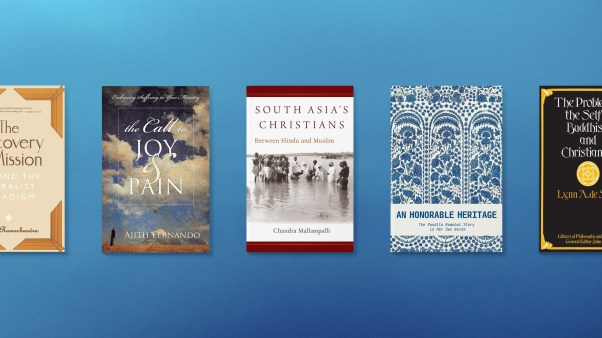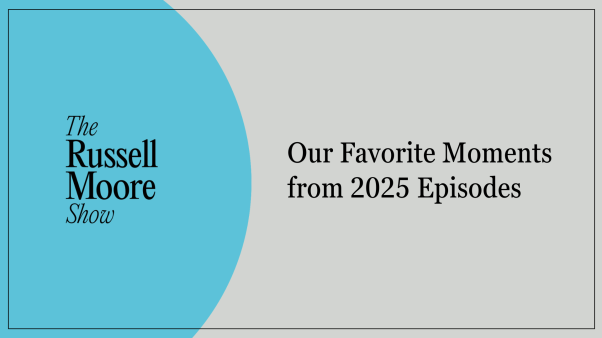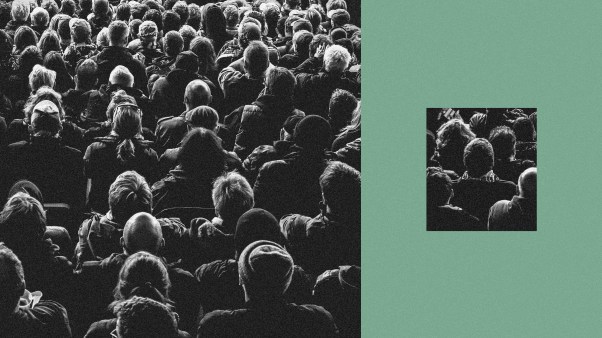Walking to the Museum of Modern Art one day over lunch, Wall Street Journal staff reporter Kelly Crow stopped at the table of an artist selling prints on a sidewalk in Midtown Manhattan.
Crow recognized the artist, Michelle Han, from her church, Resurrection Brooklyn. She perused the latest prints bought one as a gift for a friend. "I like to encourage artists, especially artists I know," Crow said, tucking the print carefully in her bag as she walked into MOMA.
Crow has covered the art world for the Journal since 2006, tracking the auctions at Sotheby's and Christie's, finding trends at famous shows such as Art Basel, and uncovering tales of heists, crime, and money in the mysterious high-rolling art world. Her tales have touched on the artistic output and family intrigue of names such as Pablo Picasso, Andy Warhol, and Man Ray.
Before joining the Journal in 2005, Crow covered city news for The New York Times and helped Pulitzer Prize–winning journalist James B. Stewart report DisneyWar, a 2005 bestselling book about the Walt Disney Company during Michael Eisner's final years as CEO. Crow has taught at Columbia University's Graduate School of Journalism, where she earned her master's degree in 2000. She recently started a ministry to encourage artists at Resurrection Brooklyn.
Crow spoke recently with Paul Glader, a former colleague from the Journal who now teaches journalism at The King's College in Manhattan.
What should Christians know about the contemporary art world?
Today's contemporary art world is global and glossy and often feels like a chessboard for billionaires, but I also find plenty of good and eternal things being crafted within it. If you believe we have a Creator and are created beings, you can't help respecting and rooting for artists who are trying to create something new, even now. You might even call it a form of worship, even if some artists don't see it that way. Contemporary art is also the latest twist in a much longer history. Over centuries and civilizations, men and women have felt this impulse to seek beauty amid chaos. Artists working today must feel this same needful tug, and I wish them well in it.
Many people are enamored with the contemporary art world: the scene, the wealth, the parties. Your stories don't just puff that bubble so much as explore, explain, and sometimes pop that bubble. Why do you do that?
If you believe we have a Creator and are created beings, you can't help respecting and rooting for artists who are trying to create something new, even now.
I'm not an art critic, so it's not my job to figure out if the art I'm seeing is any good. I do think it's my job to understand why other people prize certain artworks so highly… Go into any auction house and watch a few bidding wars and you'll learn a great deal about what people value. My job is to suss out why collectors are willing to spend millions on one canvas but not another—and how those decisions can subtly influence art lovers everywhere.
Why are economics an important filter through which to evaluate art and the art market?
Money is a major way that people divulge what they love, what they work hard for, and what they're willing to sacrifice for. So it makes sense to examine why collectors might splurge on certain pieces yet sell off others.
Art also works differently from other asset classes—it's not a house that can be lived in or gold that has an intrinsic value whether it's shaped like a necklace or a brick. The value we place in art is subjective and collective—Pablo Picasso matters because we agree he does. That's why it helps to follow the money in the art market because individual collectors have so much power to influence art values overall. If one collector comes to an auction and pays a record sum for a Picasso, that one sale can recalibrate values for every other Picasso.
How did you end up in journalism, specifically writing about art?
I joined my high-school newspaper as a junior, and my first assignment was to interview two baseball players. The pair had grown up as teammates, but that year our high school split into two schools and these guys were now sudden rivals. Dramatic, huh? I stammered my way through the interview and labored over every line of that story, and I'll never forget the elation I felt when I saw my byline for the first time.
Later, I won a local writing award for the story, and I remember carrying the certificate into the kitchen to show my mother. I was so amazed that I'd stumbled into a profession that I enjoyed and might also be good at. I was hooked.
My love of art also begins with my mother because she was the one who took me to see The Nutcracker when I was 12, and she was the one who drove me to next-door states so we could go to museums. She made art a day-trip destination, a reward, and I loved ambling around museums like the Kimball, the Philbrook, and the Nelson Atkins.
What does NYC mean to the art world?
New York is the mothership of the art world. Art is made and bought and sold around the globe now, but artists still know they need to show in New York and be hailed here if they ever have a hope of entering the art-history textbooks. New York's christening power can fluctuate, but it still matters to artists. Go to Los Angeles, Berlin, or Rio de Janeiro, and the artists there are laid-back and collegial. Hang out in New York, and you'll see that many artists here are always just a little bit anxious, even competitive. Some say that's because New York is just intense and it costs so much to survive here, but I also think it's because artists in New York know they're working in a place of reckoning.
Do you ever find yourself staring at art others are raving about that you think you could have made when you were 6?
I think it's better for me to approach artworks with an open mind because that's the quickest way for me to learn, but of course some pieces feel like con jobs. Most of the time, I can wince and walk on, but if collectors begin paying serious money for that artwork, I have to double back and examine why.
Contemporary art is like a cocktail party that's been going on for ages, and the artists in attendance are having subtle and interesting conversations with their peers but also with the iconic artists that preceded them. They're splicing complicated theories and ideas about art and the direction it should go, what it can look like next. So context is key. Picasso shocked audiences at the time he helped invent Cubism in part because no one had painted in that fractured kaleidoscopic style before. It doesn't help to look at his Cubist work today and say, "I could do that." Sure, you could – but you weren't around in the early 1900s and you didn't start that conversation. A better approach is to listen in awhile before dismissing artists working today. A few are contributing something useful, possibly radical, and how cool could it be to watch it unfold in real time?
Contemporary art is like a cocktail party that's been going on for ages.
What about the other end of the spectrum: "Christian art," such as Thomas Kinkade?
Christians should plunge in and participate in every sphere of life, and that includes art. Christians can be bold in their faith and paint pictures of Christ or draw geometric lines all day long. Whatever works for them, they should pursue it with conviction.
But I would also encourage Christian artists to step into that cocktail-party metaphor I mentioned earlier and learn the latest theories and ideas swirling around the art world and thereby find a fresh way to contribute—or refute what's being said. My worry with artists like Kinkade is that by sticking to older ideas and older styles, they risk being dismissed as kitsch. The Christian faith is provocative and potent, so why should its art play it safe?
How does your faith affect your work?
My faith tells me to do my job with integrity, to be an honest broker and to treat people as I would like to be treated. So my faith informs how I interview and how I vet my stories and all else. It's a huge influence on the kind of reporter I seek to be, fair and even-handed and truth-seeking. My faith also allows me to dig deeper whenever I speak with artists. Most of them are grappling in some form or another with tough, eternal questions—they are seekers, after all—and I appreciate the chance to engage them in meaty conversations, even if we don't agree.
How do you think working as a reporter contributes to the common good?
Every field needs people who are determined to work hard and well, with conviction and courage. If Christians are to be a bettering force in the world, they can start by being kind. Journalism gets a bad rap because people give too much credence to its razzamatazz elements, to the few who stir up mobs and seek mainly to entertain. But I feel like the best reporting informs and convicts in a way that's gentle and knowing.
What do you wish Christians knew about journalists, particularly art critics and business journalists?
Remember that we're curious people by temperament and training—and that's a good thing, not a bad thing. Just go to any country without a free press and see how people yearn to know more. Thank God we are allowed to say how we think and feel in this country.









